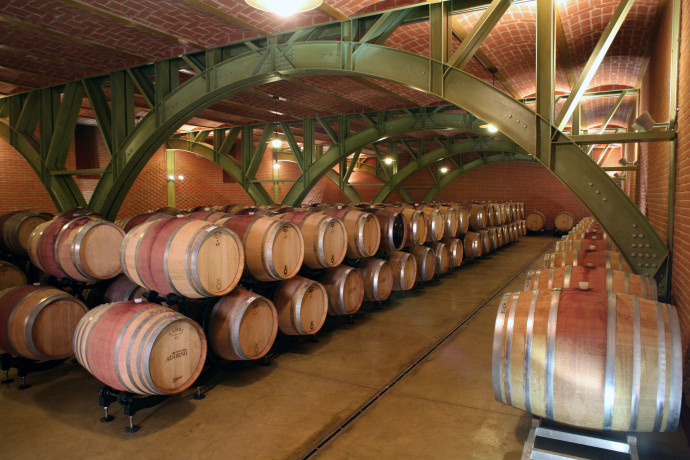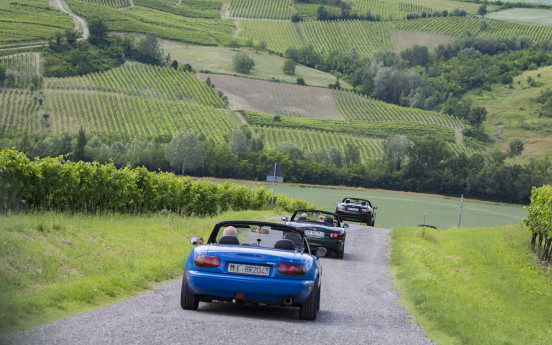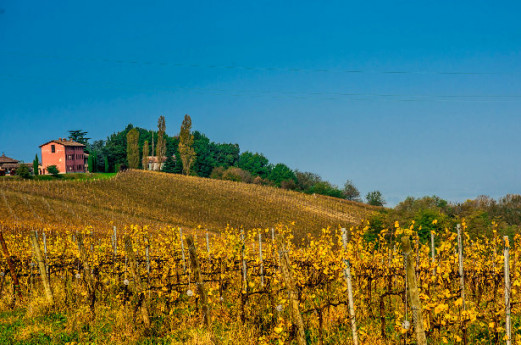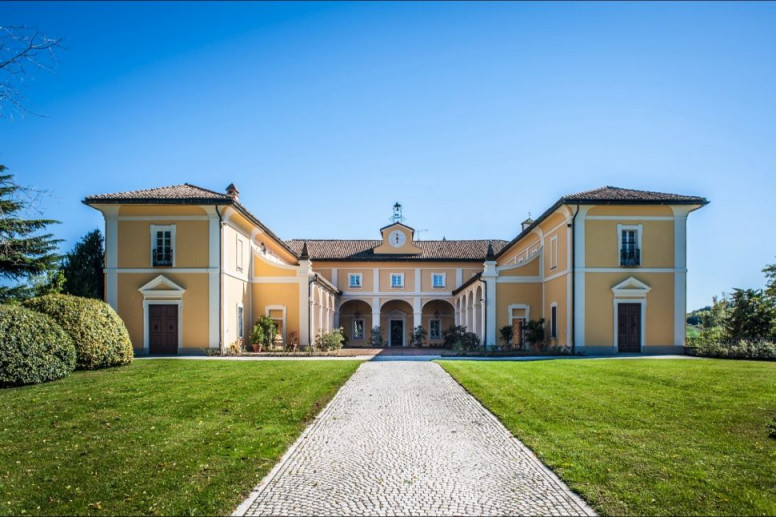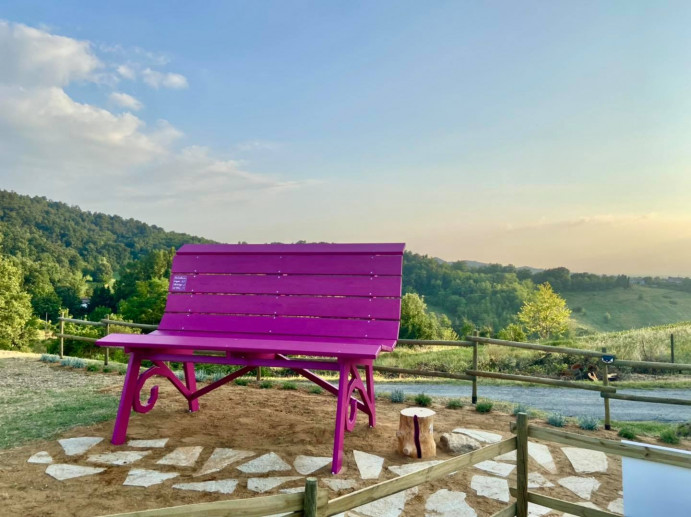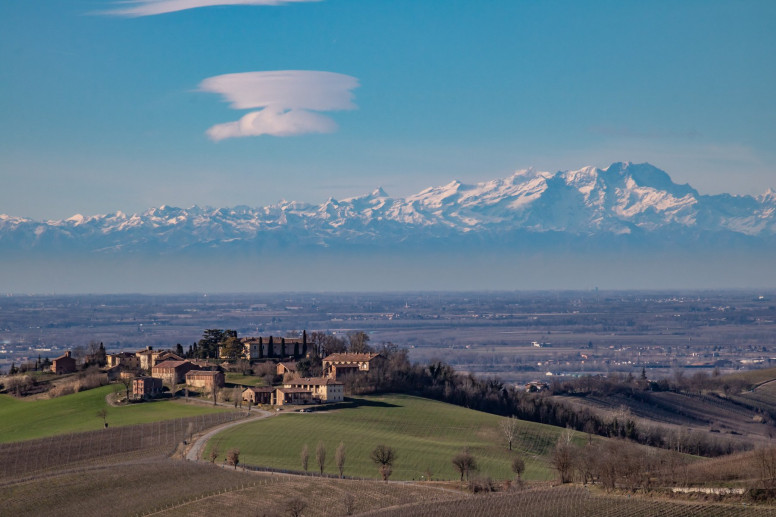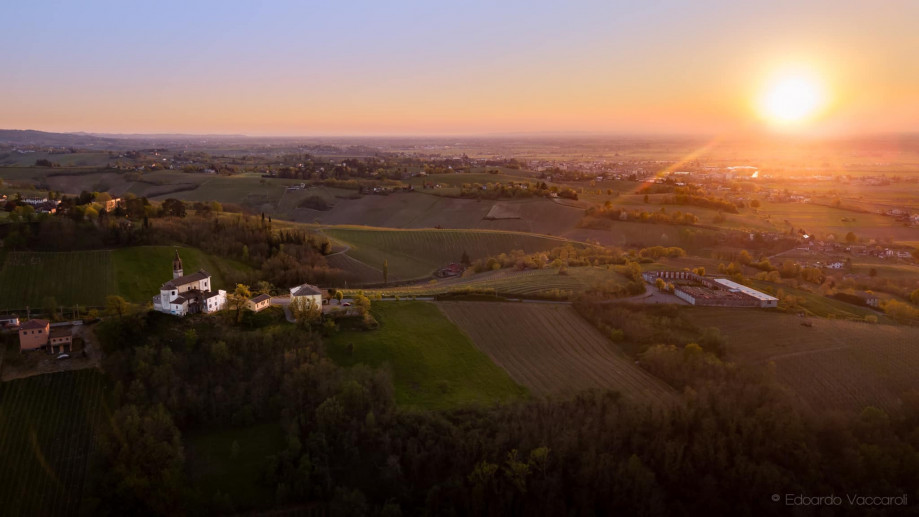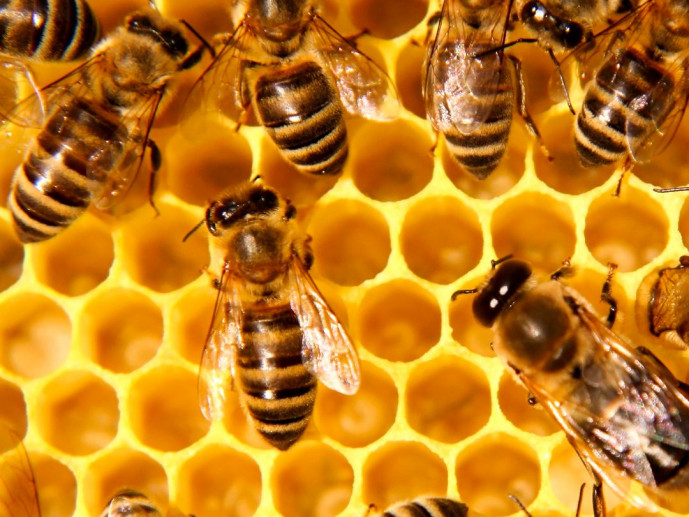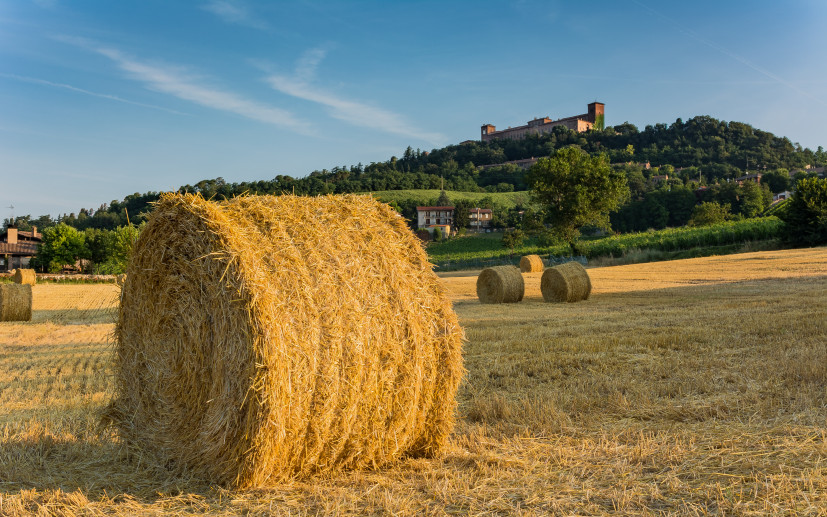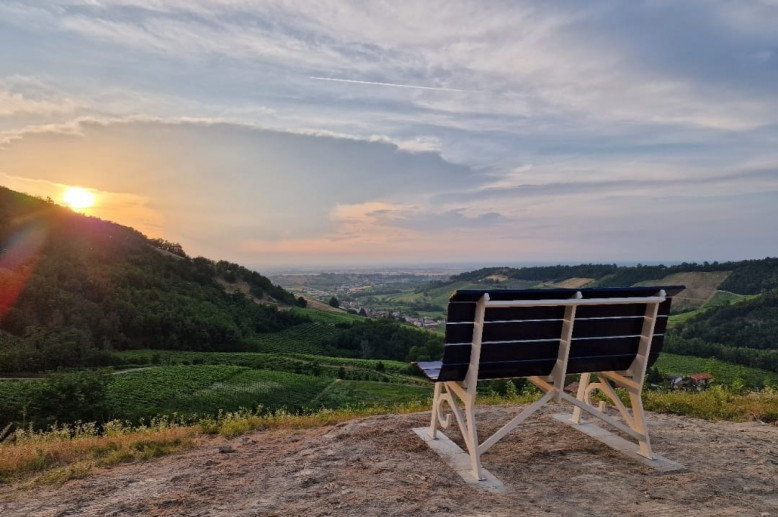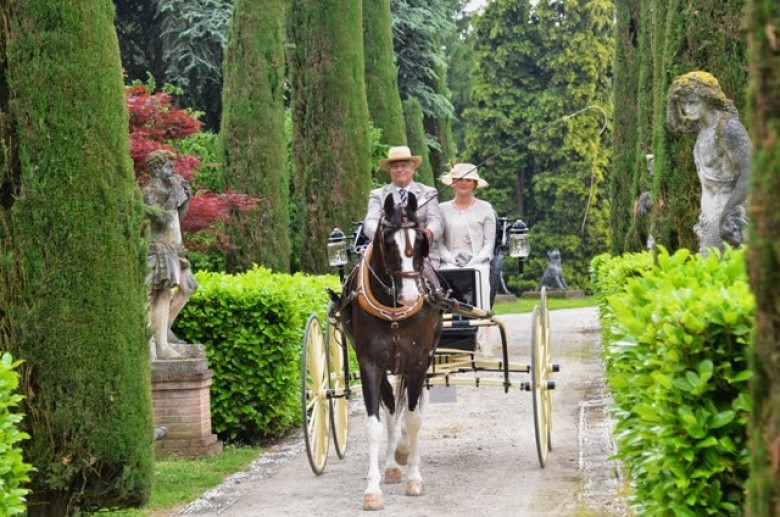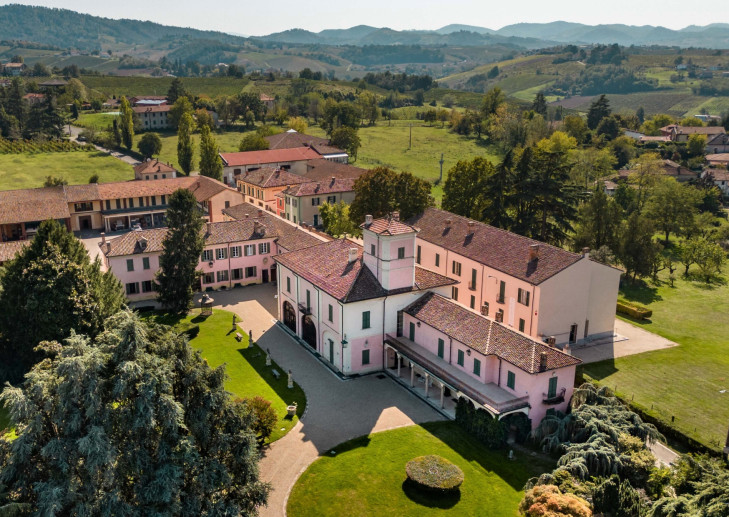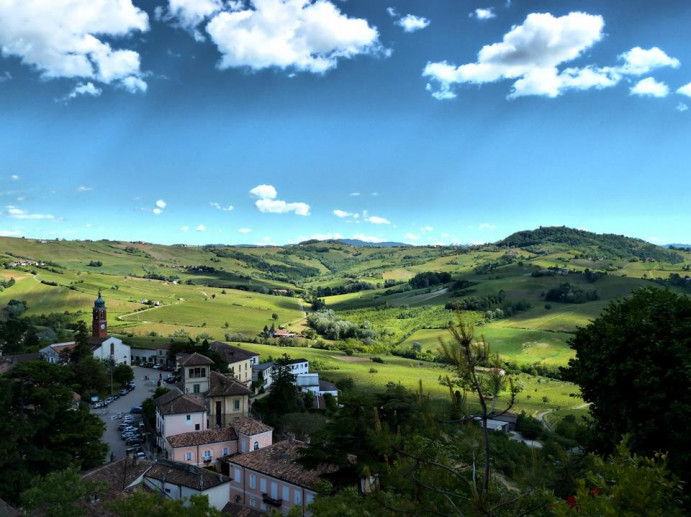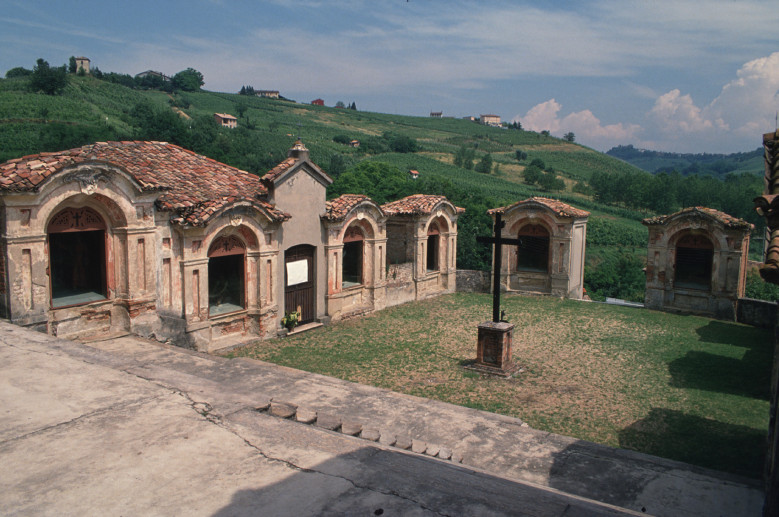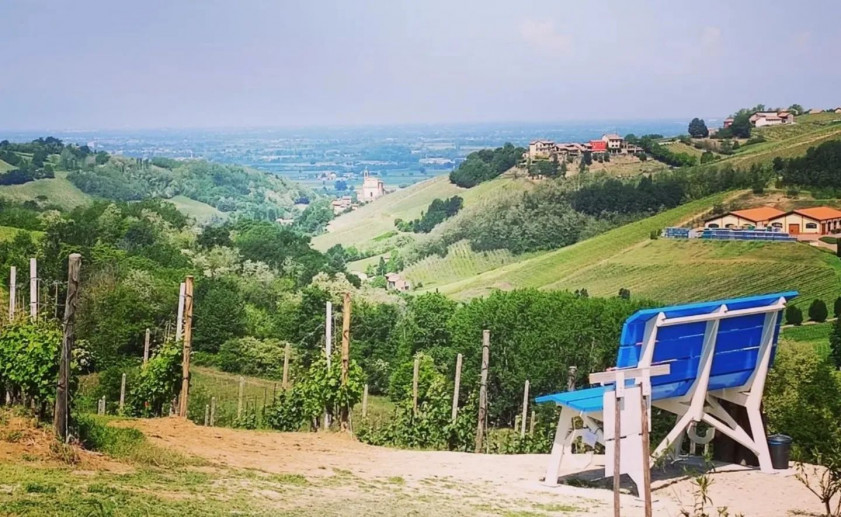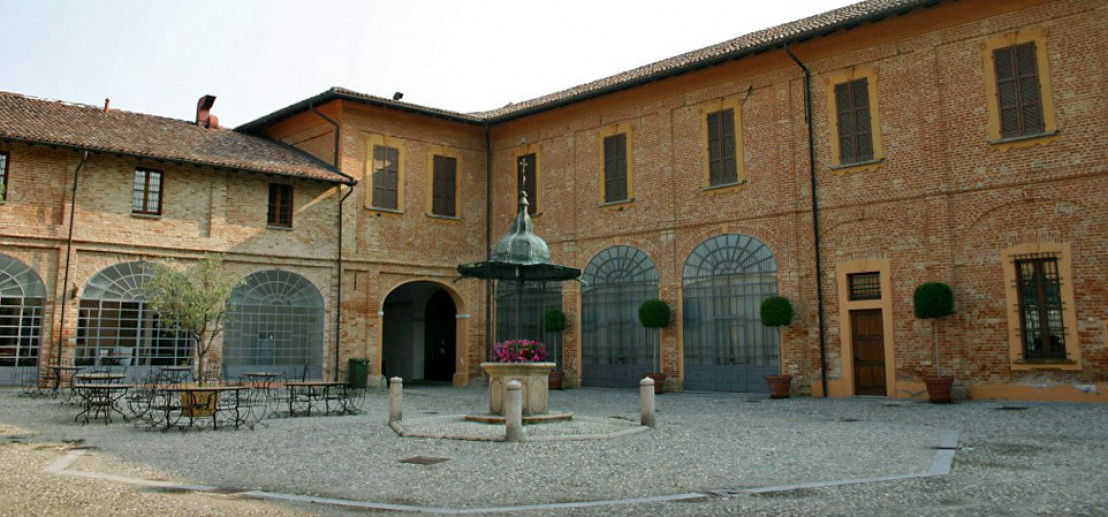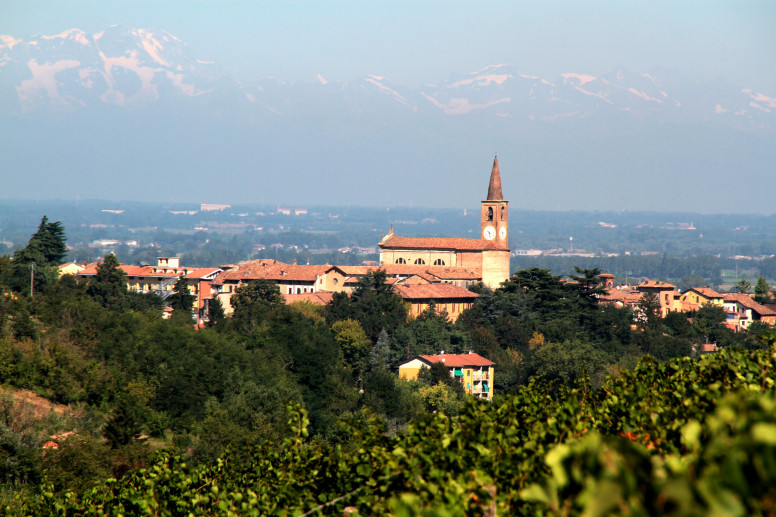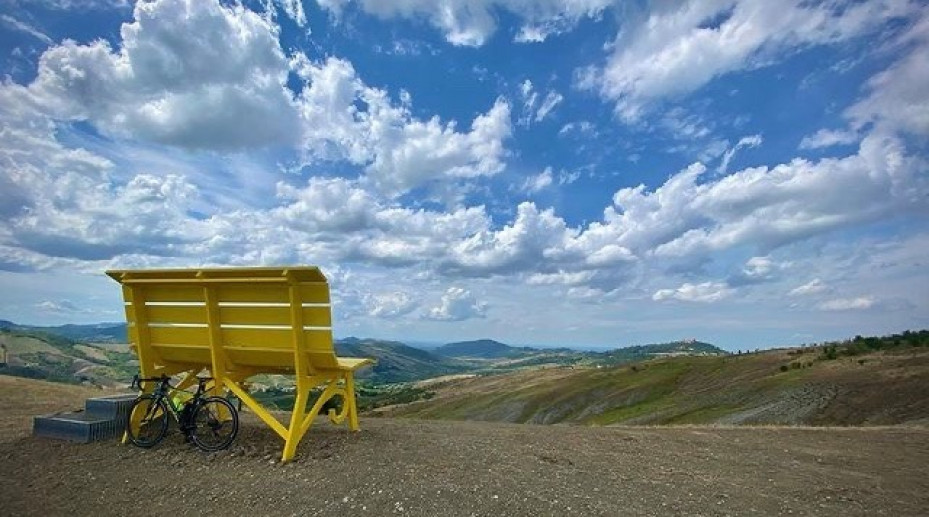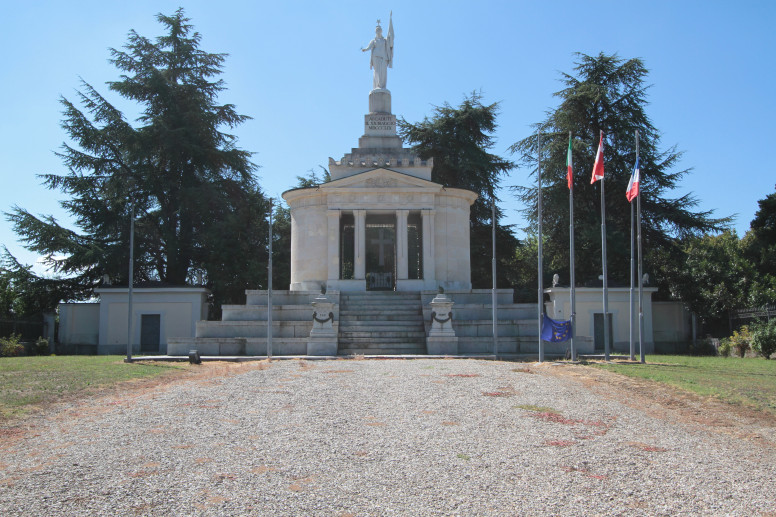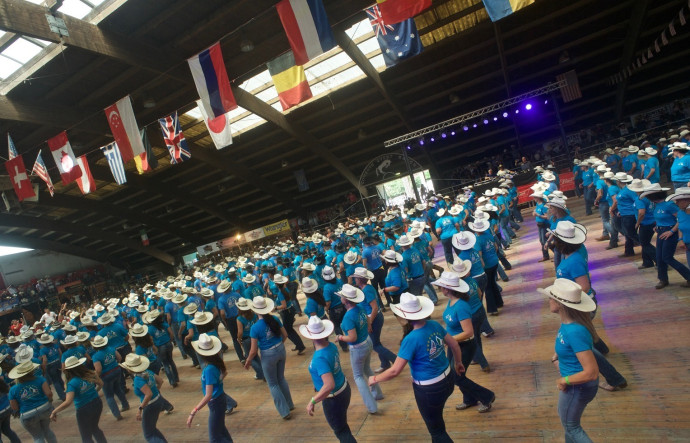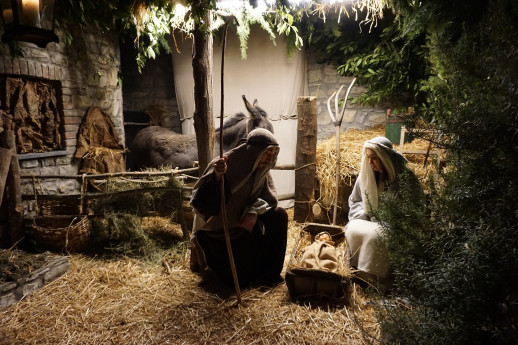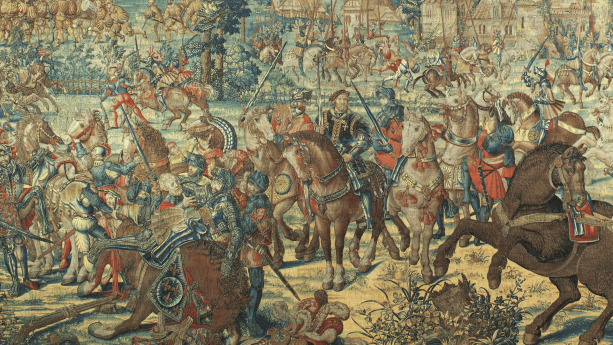- Villages
- Food & Wine
Calvignano
Along the road that rises from Casteggio towards Montalto Pavese, at the summit of Mount Cresino, we find the municipality of Calvignano.
In this small village, nestled in the hills and vineyards of the Oltrepò Pavese, stands one of the oldest wineries in the area, dating back to 1111, with an extension of 400 hectares in one large unit, 80 of which are vineyards.
The village of Calvignano, located on the first foothills of the Oltrepò hills, is primarily an agricultural town, mainly known for the production of fine wines, including Barbera, Moscato, Riesling, and Pinot, among others. Among the wineries scattered throughout the Oltrepò region, of particular interest for its ancient tradition is the Travaglino farm, first mentioned in a document from 1111. The oldest part of the current estate dates back to the 12th century, the vaulted cellar. Today, the estate extends over 400 hectares, 80 of which are vineyards, making it one of the largest contiguous properties in the hills. Here, Pinot Nero, Riesling, Chardonnay, and Pinot Grigio are grown alongside Croatina and Barbera varieties. The estate’s vineyards are located at an altitude between 250 and 300 meters above sea level.
Alongside its agricultural and winegrowing vocation, the village offers interesting historical and artistic landmarks, including the Bottigella Castle, which has records dating back to the early Middle Ages. It was almost completely demolished in the 1960s, and its remains are now immersed in a small forest. At the base of the hill where the castle once stood is the Oratory of San Rocco, whose existence is documented as early as the 12th century. It became the property of the Bottigella family in the late 1600s and was recently restored. Also of interest is Villa Travaglino, located in the center of the large agricultural complex near the Ghiara stream, with ancient origins. As mentioned earlier, the estate took on its current form in the 17th century, consisting of two courtyards, the main villa, an oratory, and other small farmhouses.
HISTORICAL NOTES
The first mention of the village of Calvignano dates back to 1111, in a will mentioning the sale of the castle and lands of the village to the Monastery of San Maiolo in Pavia. This source is particularly interesting as it mentions the presence of "new" vineyards, proving that vine cultivation was already rooted in the area. The Oltrepò Pavese, the third largest area in the world for the production of Pinot Nero after Champagne and Burgundy and the largest in Italy with over 3,000 hectares of vineyards, includes 78 municipalities. Among these is the village of Calvignano, whose central core is located along the panoramic Casteggio - Montalto Pavese route, with an additional 14 scattered farmhouses. An important presence in the village and an example of the Oltrepò Pavese’s wine tradition is the Travaglino agricultural estate. Acquired in the 19th century by the knight Vincenzo Comi, this millennia-old estate has been in the same family for almost 150 years and is undoubtedly an important reference point in the Oltrepò wine scene and beyond.
PLACES TO SEE
Church of San Carlo
In 1844, it was rebuilt on the remains of the ancient church, along with the parish house and the cemetery. In 1860, the Municipality and the school were added to the sides. These buildings, with their mirrored plans, along with the Church, form the U-shaped layout that defines the main public square of Calvignano. The Church of San Carlo is in neoclassical style and has a single nave. The oil painting that can be admired in the presbytery depicts the Holy Family and dates back to the 18th century. Upon entering, on the right, is the altar of Saint John Bosco, with an oil painting created in 1947 by Carlo Morgari. Saint John Bosco is depicted surrounded by peasants, soldiers, and a mother pointing him out to her child, along with other children.
Bottigella Castle
This castle has been known since the early Middle Ages. The priest Gisulfo bequeaths the castle and lands of Calvignano to his designated heirs, and if they fail, to the Monastery of San Maiolo in Pavia and the noble Bottigella family. This castle dominates a hill and precedes the center of the village, offering an excellent position to control the main road leading to the village. In the 1960s, it was almost entirely demolished, and today, what remains of its western side is immersed in a small forest.
Oratory of San Rocco
At the base of the hill where the castle once stood, this oratory already existed in the 12th century and was dedicated to Saint Rocco, the patron saint of plague sufferers. From the late 1600s, it was certainly owned by the Bottigella family, but by 1761, it was so degraded that public functions could no longer be held there. It was restored in 1817 and again in 2003.
Villa Travaglino
Located in the center of a large agricultural estate towards the Ghiara stream, this villa also dates back to the 12th century, when it was part of the Monastery of San Maiolo in Pavia and the noble Bottigella family. In the 17th century, it was transformed into the complex we see today, consisting of two courtyards, the main villa, an oratory, and other small farmhouses.
Gigantic Bench with a magnificent view of Oltrepò Pavese
